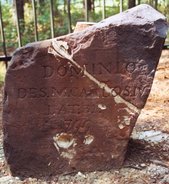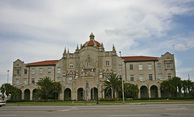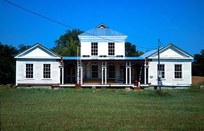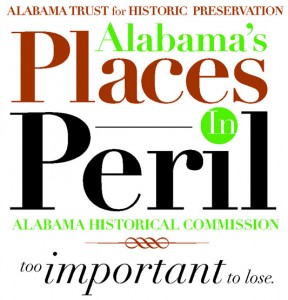 Click image to enlarge.
Click image to enlarge.
 Click image to enlarge. Click image to enlarge. In 1796, as a result of the Treaty of San Lorenzo el Real, also known as the Pinckney Treaty, President George Washington appointed Maj. Andrew Ellicott, astronomer and surveyor, to survey and mark the "line of demarcation" establishing the boundary between the Mississippi Territory (including what is now Alabama) and Spanish West Florida. In 1799 Major Ellicott marked the boundary at the 31st parallel of North latitude with what is known today as the Ellicott Stone. This historic monolith, an irregular piece of brown ferruginous sandstone, is inscribed on the north side "U.S. Lat. 31 1799" and on the south side "Dominos de S.M.C. CAROLUS IV. Lat. 31 1799" (Dominion of his Catholic Majesty Charles IV).
0 Comments
 Click image to enlarge. (Courtesy Wikimedia) Click image to enlarge. (Courtesy Wikimedia) Constructed in 1905 during the heyday of U.S. rail transportation, particularly passenger transportation, the GM&O terminal is typical of the grandiose railroad buildings erected across the country during the early twentieth century. Significant architecturally as a fine example of the Spanish Colonial Revival style, the building also has historical significance for the role it played in the history of transportation. From 1905 through 1958, this building was the major rail terminus for North/South and East/West passengers across the Gulf Coast region. Designed by P. Thornton Marye of Atlanta, the building was listed on the National Register of Historic Places in 1976. City officials in this historic northeast Alabama college town have seemingly abandoned comprehensive planning in favor of free-for-a ll spot commercial zoning that is eroding the traditional character of Pelham Road, Jacksonville's main thoroughfare. Pelham Road's attractive mix of residences large and small, some dating back a century and a half, once gave the newcomer a memorable introduction to Jacksonville. Now mini-marts and fast-food places are springing up willy-nilly.
 Click on image to enlarge. (Courtesy Christopher Humphries) Click on image to enlarge. (Courtesy Christopher Humphries) The term cottage orne as employed by Victorians could refer to any small- or medium-sized house rustically situated in a rural or semi-rural setting and ornamented so as to convey a picturesque effect. Often these houses had "Gothic" window or "Italian" brackets or even neo-classical details. The primary object was not to mimic a particular architectural style but to suggest a mood: one of civilized, quasi-agrarian domesticity. |
Alabama's Endangered Historic LandmarksEach year since 1994, Alabama Heritage has highlighted threatened historic sites throughout Alabama. The “Places in Peril” list has identified more than 215 imperiled historic resources throughout the state, and is compiled by the Alabama Historical Commission and the Alabama Trust for Historic Preservation. The locations highlight the results of deferred maintenance, perceived obsolescence, development pressures, and lack of funding—forces that now more than ever threaten our cultural legacy. But awareness is a powerful force, too, and can cultivate a renewed determination to be responsible stewards of our heritage. For more information, visit the AHC or the ATHP websites. Alabama Heritage is proud to bring to you a selection of the places designated as perilous. Please keep your comments to information relevant to the featured place in peril. Alabama Heritage reserves the right to delete any comment that we deem inappropriate. Archives
May 2024
|

 RSS Feed
RSS Feed